Drug & Alcohol Team
Setting Effective Boundaries
Boundaries are limits that we identify for ourselves about what we feel is reasonable behaviour from others. One example of a boundary is “I will not speak to my daughter when she is intoxicated”. Boundaries are not about the other person, they are about ourselves – what we expect from others.
Boundaries can be thought of as fences, rather than brick walls. They mark out our personal space, rights and preferences. They are there to protect us. They are not there to keep people out. You can communicate over a fence; you cannot communicate through a wall.
Effective boundaries are at the heart of all healthy relationships. They help to develop trust, stability and mutual respect.
Communication is key when looking to set boundaries. As boundaries are about ourselves, they are best communicated with “I” statements (“I feel unwell breathing in your second-hand smoke, so can I ask you to smoke outside in future”).
Three steps to setting a boundary:
Define – What is the issue and what change is needed to resolve this issue. It is helpful to define the boundary in terms of behaviour, rather than the person. For example – “I don’t want you to use in the home” rather than “I don’t want you in the home when you are using”. Be clear about the boundary and clear about the consequence should the boundary be broken.
Try and think of the likely response to you setting your boundary. Can you prepare for the response in advance?
Set – Ideally setting a boundary can be a negotiation; both parties sharing their thoughts and feeling and coming to a mutual agreement. Listen to each other and be open and honest about how you feel. If negotiation has been attempted and is not possible, the boundary may have to be imposed without negation.
Boundaries can be communicated using the ‘inform and request’ model.
Inform – “When you do (the behaviour) I feel (your reaction)
Request – “Can I ask you to… (stop / change a behaviour)
For example: “When you call me in the middle of the night, I get anxious and then cannot get back to sleep. Can I ask that in future you do not call me after 9pm”. Remember, this is about the person’s behaviour, not them as a person.
Keep – Take the time to notice when a boundary is or isn’t being kept. If the boundary has been maintained, let them know that you appreciate it. If the boundary has been broken, we need to acknowledge this with the person. It may sometimes feel easier to ‘keep the peace’ by not bringing it up, but if we don’t challenge broken boundaries, we are less likely to see positive change and boundaries are unlikely to be effective in the future. If a boundary is broken, you need to respond appropriately and assertively.
Be realistic about what happened. Don’t make excuses for someone else’s behaviour. Take time to think of your response, try not to respond in the heat of the moment. Sometimes writing down or telling other people about your boundaries, and consequences if they are broken, can help you go through with the consequence. In reality, a boundary may need re-setting and modifying a number of times.
Remember, no-one has perfect boundaries and they take time to get right.
- Acknowledge that the boundary has been broken
- State what has happened and how this makes you feel
- Be a ‘broken record’ – repeat the boundary and what you want, do not let yourself be deflected/distracted.
- Review and restate the boundary. If this failed, why did it fail? Is the boundary realistic?
- Implement the consequence of the broken boundary
- Be consistent in your response.
Setting boundaries is not easy. It takes time and practice to get right. It can often help speaking with others who may have been through similar experiences. Carers Leeds offer monthly support groups to meet with other people who are affected by someone else’s drug/alcohol use.
- Try setting boundaries around smaller changes, and working up to bigger changes.
- Don’t attempt to set boundaries when someone is intoxicated and don’t attempt to set them in the ‘heat of the battle’.
- Set clear consequences for what will happen if the boundary is broken and only set consequences that you feel confident to go through with.
- Make it clear that this isn’t ‘punishment’; rather you are setting boundaries because you care about the person and care about your own needs.
- These boundary setting skills can apply to all relationships in your life, not just with regards to the person using substances.
Remember, your needs are equal to those of other people. You are entitled to respect. If there is a hostile response, your safety has to be the priority. If you do not feel safe, end the conversation and leave the situation.


